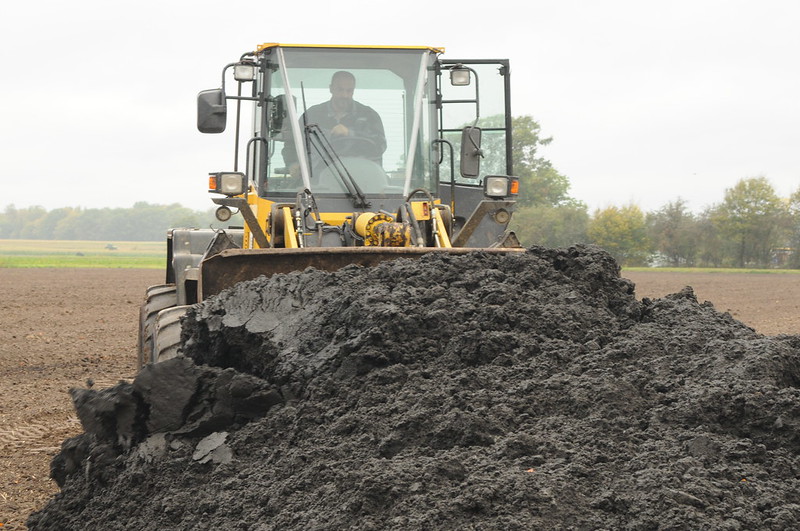PFAS Chemicals: Why Prevention is the Best Medicine
What are PFAS chemicals? Although the name is obscure, their effect is widespread and overreaching. PFAS are a group of approximately 9000 hazardous chemicals used in both industrial processes and consumer goods. PFAS chemicals were created in the 1930s and subsequently used in America’s commercial and industrial sectors, even contributing to the success of the Manhattan Project. After the efficiency of the chemicals became widely known, their usage increased dramatically. But because of the ubiquitousness and persistence of the chemicals, they ended up in our wastestream, with widespread consequences.

For both environmental and economic reasons, waste treatment facilities have historically sold sludge to farmers to be used as fertilizer. This saved money for farmers and municipal waste facility operators as it seemed to be a practical disposal method. In short, this process was a prime example of the circular economy at work, and many environmentalists (including some of us at rbouvier consulting) lauded the practice. Unfortunately, PFAS chemicals (also known as “forever chemicals”) have since been demonstrated to be hazardous for the environment, capable of rapidly spreading, and extremely durable. PFAS chemicals spread through groundwater aquifers, air, building improvements, surface soils, deep soils, and water. In humans, exposure to PFAS chemicals has been linked to thyroid disease, testicular and kidney cancer, pregnancy-induced hypertension, ulcerative colitis, and increased cholesterol. Lastly, PFAS chemicals harm the environment and have a negative effect on wildlife.
In other words, the well-intentioned use of the sludge as fertilizer ended up harming the very farmers it was intended to help. In Maine, that has led to financial disaster for many dairy farms and disruption to the local food system. Moreover, rather than being able to be used as fertilizer, the sludge has had to be diverted to landfills, where the liquid sludge may cause an imbalance and increase the risk of collapse.
How did this happen? And what can we do to ensure this doesn’t happen again?

Prior to 2016, many chemicals were regulated under the Toxic Substances Control Act (TSCA), which gave the EPA authority to require reporting and restrictions for various chemicals. Unfortunately, it was widely acknowledged to be ineffective. In 2016, Congress overwhelmingly passed a bill updating TSCA that would test unregulated chemicals currently on the market to ensure they meet environmental standards. Among these chemicals is, of course, PFAS, which have already been shown to be toxic for the environment.
While a good start, it will still take decades for the EPA to test and approve of chemicals already present in the marketplace, let alone new ones, which are being introduced all the time. In the meantime, cleaning up PFAS chemicals will be expensive. Inaction, though, would also be costly, although those costs (primarily health and productivity) are not always as overt. The Investment and Jobs Act, which passed with bipartisan support, allocated roughly $2 billion dollars to help remedy the effects of PFAS chemicals on drinking water.
Complicating things further, state level approaches to PFAS chemicals vary widely, as reported in a recent article in the Portland Press Herald. California, a state known for its commitment to environmentalism, has taken no action to stop the spread of PFAS contaminated sludge onto farmland. This is a position polar opposite to Maine, which sparks several questions. Does California know something Maine doesn’t? Are there additional environmental and economic factors at play? Meanwhile, the EPA has yet to announce a formal position on how to address PFAS chemicals, a result which many states are waiting on before taking action. Ultimately, the strong contrast in responses between California and Maine – two traditionally environmentalist states – shows that the issue of PFAS chemicals is far from settled.
The concern about PFAS chemicals is a prime example of actions that seem to save money in the short run, but are actually costly in the long run. Economists call these actions “false economies.” This is our mission at rbouvier consulting, to address environmental issues from an economic perspective. If you are interested in this issue, the referenced sources below provide more detail, or contact us directly.
Post by Connor Feeney
Works Cited
Tachovsky, M., & Bell, R. (2021, May 11). Real estate damage economics: The impact of
PFAS “forever chemicals” on Real Estate Valuation. Taylor & Francis. Retrieved March 21, 2023, from https://www.tandfonline.com/doi/full/10.1080/10406026.2021.1923926
Cordner, A., Goldenman, G., Birnbaum, L. S., Brown, P., Miller, M. F., Mueller, R., Patton,
S., Salvatore, D. H., & Trasande, L. (n.d.). The true cost of PFAS and the benefits of acting now. Environmental Science & Technology. Retrieved March 8, 2023, from https://pubs.acs.org/doi/10.1021/acs.est.1c03565
Environmental Protection Agency. (n.d.). EPA. Retrieved March 21, 2023, from
Overton, P. (2023, March 19). From Maine to California, the solution to sludge disposal is not settled. Press Herald. Retrieved March 21, 2023, from https://www.pressherald.com/2023/03/19/from-maine-to-california-states-struggle-with-sludge-solutions/